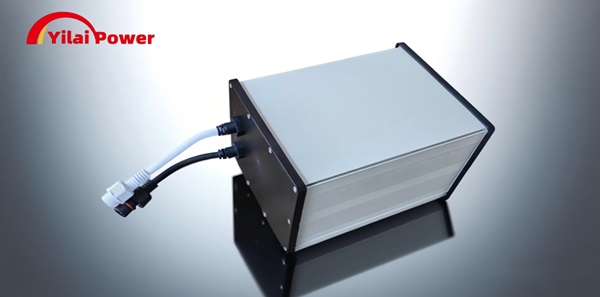As the application of photovoltaics continues to grow, selecting the right solar battery directly affects power generation efficiency, system stability, and long-term returns. The following guide breaks down the scientific logic of battery selection, taking into account core requirements, battery types, key parameters, and scene compatibility to help you avoid purchasing pitfalls and build an efficient solar application system.
Household Energy Storage Scenario
For a household photovoltaic + energy storage system, the key considerations are "capacity matching + long lifespan + low maintenance":
Capacity: Based on average daily energy consumption (for example, for a household that consumes 3 - 5 kWh per day, a battery capacity of 5 - 10 kWh is recommended), and the peak-to-valley electricity difference (if there is high power consumption in the evening, such as air conditioners or other electrical devices, sufficient storage is needed).
Lifespan: For long-term use, it is best to choose lithium batteries with a cycle life of over 3000 cycles to avoid frequent replacements.
Maintenance: Opt for maintenance-free lithium batteries to reduce the cost of daily maintenance.
Off-grid Power Generation Scenario (e.g., remote pastoral areas, outdoor base stations)
The core needs are "high reliability + wide temperature range + extreme environment resistance":
Reliability: The battery must withstand long-term independent operation, with lithium batteries equipped with BMS (Battery Management System) being preferred to precisely control charging and discharging to avoid damage due to overcharging or over-discharging.
Temperature Range: Lithium batteries generally offer a wider operating temperature range compared to other types of batteries (such as some lead-acid batteries), especially in cold or hot areas.
Extreme Environment: For outdoor environments, choose lithium batteries with a high protection rating (e.g., IP68 protection) and shock- and impact-resistant properties.
Small Portable Scenario (solar power banks, outdoor camping)
Focus on "lightweight + fast charging + compatibility":
Lightweight: Choose high energy density lithium batteries (e.g., 18650 lithium cells) that are small in size and light in weight for easy portability.
Fast Charging: Batteries/controllers supporting MPPT (Maximum Power Point Tracking) can quickly absorb solar panel power, reducing charging time.
Compatibility: Ensure that the output interfaces are compatible with mobile phones and small appliances (e.g., 5V/USB, 12V car charging interfaces), allowing multiple devices to be powered.

The main lithium battery types used in solar systems are lithium polymer, lithium iron phosphate, and ternary lithium. Due to their different characteristics, they are suitable for various scenarios:
| Battery Type | Core Advantages | Main Disadvantages | Adaptation Scenarios |
|---|---|---|---|
| Lithium Iron Phosphate (LiFePO4) | 1. Long lifespan (over 3000 cycles) 2. High safety 3. Moderate energy density 4. Cost-effective in the long run | Relatively weaker low-temperature performance, lower energy density than ternary lithium | Household energy storage, commercial energy storage, off-grid long-term operation systems |
| Ternary Lithium | 1. High energy density 2. Good low-temperature performance | Safety depends on BMS protection | Scenarios sensitive to weight/volume (e.g., portable devices, high-end RVs), areas requiring good low-temperature performance |
| Lithium Polymer | 1. Flexible packaging, adaptable to irregular spaces 2. High energy density 3. Stable cycle life 4. High safety | Higher cost | Portable electronic devices, special power supplies, customized energy storage scenarios |
Capacity and Voltage
Capacity: Measured in "kilowatt-hours (kWh)", directly determines the storage capacity (e.g., a 5 kWh battery stores 5 kWh of energy). When selecting, refer to "daily energy consumption × backup days" (for households, it is recommended to store 1-3 days of power to account for cloudy days).
Voltage: Must match with the solar panel and inverter (e.g., 12V, 24V, 48V systems). If the voltage is not compatible, a step-up/down module will be needed, adding losses and costs. It's preferable to choose a battery that matches the system voltage.
Charge and Discharge Efficiency
Definition: The ratio of input charge to output charge (e.g., 90% efficiency means that charging 10 kWh can discharge up to 9 kWh).
Key: Lithium batteries generally have a charge/discharge efficiency between 85% and 95%. High-efficiency batteries reduce energy waste, especially in "frequent charge and discharge" scenarios (such as households charging during the day and discharging at night).
Cycle Life
Definition: The number of "full charge - full discharge" cycles (after this number of cycles, the battery capacity drops to less than 80% of the original).
Reference: Lithium iron phosphate batteries can achieve more than 3000 cycles. For long-term use, choose batteries with a high cycle life to lower the average cost of long-term use.
Self-Discharge Rate
Definition: The rate at which a battery loses charge when idle (e.g., if the self-discharge rate is 5% per month, after 6 months, 70% of the battery's charge remains).
Comparison: Lithium batteries have a low self-discharge rate (2% - 5% per month). For systems that are "idle for long periods" (e.g., seasonally used outdoor equipment), it's better to select batteries with low self-discharge.
Temperature Coefficient
Definition: The impact of temperature changes on the battery's charge and discharge (e.g., a temperature coefficient of -0.5%/°C means that for every 1°C drop in temperature, the capacity and performance change accordingly).
Key: In high-temperature regions (e.g., deserts), select lithium batteries that adapt to temperature changes and maintain stability (such as lithium iron phosphate), avoiding significant performance degradation due to high temperatures. In cold regions (e.g., northeast), choose batteries with good low-temperature performance (such as ternary lithium systems).
Safety Design
Essential Features: Overcharge protection (to prevent battery explosion), over-discharge protection (to prevent deep discharge damage), short-circuit protection (to prevent fire).
Advanced Features: Lithium batteries should include a BMS (Battery Management System) to monitor the status of each cell in real-time, ensuring safety and performance.
Focusing Only on "Initial Capacity" and Ignoring "Actual Usable Capacity"
Pitfall: Some batteries list "capacity parameters", but in practice, limitations like discharge depth reduce the actual usable capacity.
Solution: Ask about the "maximum discharge depth (DOD)" and calculate the "actual usable capacity = rated capacity × DOD" (with lithium batteries, a reasonable DOD design can allow a higher percentage).
Relying on "Single Performance Advantages" and Ignoring Scene Adaptation
Pitfall: Ternary lithium batteries have high energy density, but different scenarios require different needs for safety, lifespan, etc. In household energy storage, it is necessary to consider all aspects.
Solution: Choose batteries based on scene priorities (safety and lifespan for household storage, energy density and weight for portable scenarios).
Ignoring "System Compatibility" When Battery, Solar Panels, and Inverters Are Incompatible
Pitfall: If the battery and solar system components are not compatible in terms of voltage, it can increase losses and create points of failure.
Solution: Plan the system voltage in advance (e.g., 12V, 48V), ensuring that the battery matches the voltage of the solar panel and inverter or select "smart adaptation" devices (integrated units with MPPT controllers).
Being Attracted by "Initial Cost" and Ignoring Hidden Costs
Pitfall: Some batteries may seem to have low initial costs but have short lifespans and complex maintenance, leading to high long-term costs.
Solution: Calculate the "total lifecycle cost = initial cost + potential replacement cost + maintenance cost" and prioritize lithium batteries with "long-term economic advantages" (e.g., although lithium iron phosphate may have a higher initial cost, if it lasts for many years, the average annual cost is more favorable).
Not Considering "Quality and After-Sales" and Facing High Risk with Unreliable Batteries
Pitfall: Batteries from small manufacturers may have falsely labeled parameters, poor craftsmanship, and no after-sales service.
Solution: Choose a "professional lithium battery manufacturer + complete after-sales service", keep the purchase receipt, and verify the warranty policy to ensure long-term stable use.

Example: Household Low-Power Storage
Solution: Lithium iron phosphate battery (e.g., with voltage and capacity matching household daily and emergency power needs) + Intelligent inverter with BMS.
Adaptation: Household stores electricity during the day, supplies power at night (can support commonly used appliances), long cycle life, maintenance-free, high safety.
Advantages: Long-term stable operation, fits household photovoltaic storage needs, lowers long-term electricity costs.
Example: Industrial and Commercial Storage
Solution: Lithium iron phosphate battery (high capacity, high cycle life system) + Intelligent management system.
Adaptation: Industrial and commercial peak-valley electricity price arbitrage (charging at low cost during the day, discharging at high cost at night), backup power for factories, suitable for high-power, high-frequency charge and discharge.
Advantages: Cycle life over 3000 times (usable for many years), efficient and stable, helping to reduce costs and improve efficiency in the industrial and commercial sector.
Example: Portable/Outdoor Energy Storage
Solution: Ternary lithium battery (high energy density, low-temperature adaptability) + MPPT fast-charging controller.
Adaptation: Outdoor camping (with small appliances), special environment operations, compact, lightweight, fast charging and discharging.
Advantages: Suitable for mobile and special environments, meets the flexibility of energy use in portable scenarios.
The core of selecting a solar battery is balancing needs, performance, and cost. It is recommended to first clarify the application scenario, then compare battery types, while paying attention to key parameters such as capacity, lifespan, and efficiency. Avoid purchasing pitfalls to select the most suitable, durable, and efficient product, ensuring long-term stable operation of the photovoltaic system.